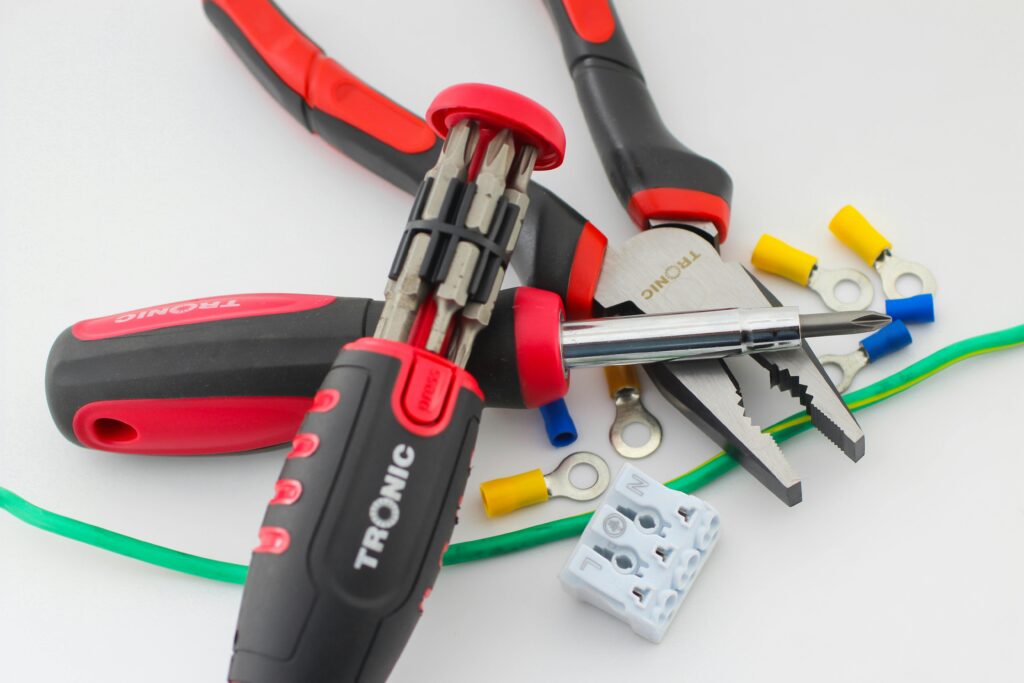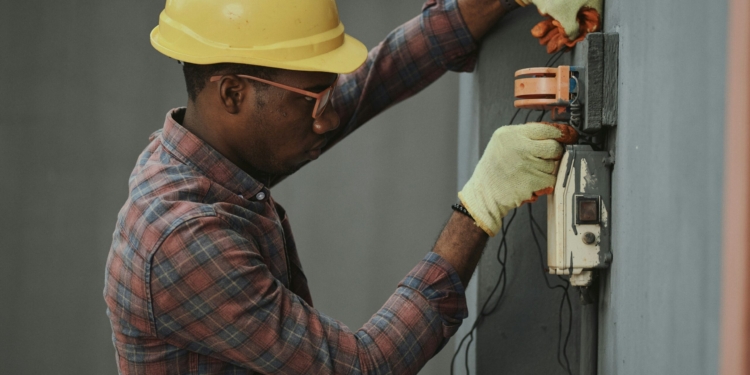Image source: Unsplash
Introduction
Electricians face numerous hazards in their daily work, including electrical shocks, burns, and falls. Proper safety equipment is essential to mitigate these risks. This guide covers the top safety equipment every electrician should have to stay protected on the job.
Personal Protective Equipment (PPE)
Arc Flash Suits
Arc flash suits are essential. They protect against the intense heat and light from an arc flash. These suits are made from flame-resistant materials. They include hoods, gloves, and coveralls. Selecting the right arc flash suit is crucial. Ensure it has the appropriate rating for your work environment.
Insulated Gloves
Insulated gloves protect against electrical shocks. They are made from rubber or other insulating materials. Different voltage levels require different gloves. Always wear gloves rated for the voltage you are working with. Inspect and test gloves regularly to ensure they are effective.
Safety Glasses and Face Shields
Safety glasses and face shields are vital. They protect from flying debris, sparks, and arc flashes. Safety glasses should have side shields. Face shields offer additional protection for the face and neck. Arc flash-rated face shields are made from materials that can withstand high temperatures.
Flame-Resistant Clothing
Flame-resistant (FR) clothing is important. It self-extinguishes when exposed to flames. This reduces the risk of severe burns. Electricians should wear FR shirts, pants, and jackets. Ensure the clothing is comfortable and allows for movement. Proper FR clothing enhances both safety and comfort.
Fall Protection
Harnesses and Lanyards
Electricians often work at heights. Fall protection is essential. Full-body harnesses distribute the force of a fall. Lanyards connect the harness to an anchor point. Some lanyards have shock absorbers to minimize fall impact. Self-retracting lifelines (SRLs) provide automatic tension and retraction.
Anchors and Connectors
Anchors and connectors are critical. Anchors must be securely attached to stable structures. Connectors, like carabiners and snap hooks, link the harness and lanyard to the anchor. Choose anchors and connectors rated for the weight and fall forces they will encounter.
Respiratory Protection
Respirators and Masks
Electricians may encounter harmful dust, fumes, and vapors. Respirators and masks are essential. They filter out hazardous particles. Different types include disposable masks, half-face, and full-face respirators. The choice depends on the specific hazards present.
Hearing Protection
Earplugs and Earmuffs
Noisy environments are common in electrical work. Hearing protection is necessary. Earplugs and earmuffs reduce exposure to harmful noise levels. Earplugs are inserted into the ear canal. Earmuffs cover the entire ear. Select comfortable hearing protection that provides adequate noise reduction.
Head Protection
Hard Hats
Hard hats protect against head injuries from falling objects and bumps. They should be made from non-conductive materials. This provides protection against electrical shocks. Hard hats should have a suspension system to absorb impact. Regularly inspect hard hats for cracks or damage and replace as needed.
Foot Protection
Safety Boots
Safety boots protect against electrical hazards, falling objects, and slips. Boots should have non-conductive soles. They should also resist punctures and abrasions. Some safety boots include steel or composite toes. Choose comfortable boots that provide support for long periods of standing and walking.
Hand Protection
Insulated Tools

Image source: Pexels
Insulated tools prevent electrical shocks. They have non-conductive handles. Common insulated tools include screwdrivers, pliers, and wire strippers. Ensure tools are rated for the voltage you are working with. Regularly inspect tools for wear and damage.
Cut-Resistant Gloves
Cut-resistant gloves protect against cuts and punctures. They are made from materials like Kevlar. These gloves balance protection and dexterity. They are useful when handling cables and sharp tools.
Conclusion
Safety is paramount for electricians. Using the right equipment is essential. Arc flash suits, insulated gloves, safety glasses, and face shields provide protection. Fall protection equipment, respiratory protection, hearing protection, and head protection are crucial. Safety boots and insulated tools enhance safety further. By investing in high-quality safety gear, electricians can reduce the risk of injury.
For more information on essential safety equipment for electricians, visit Western Safety.







